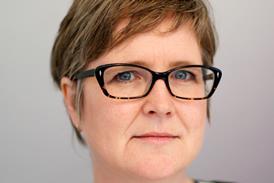As power passes from strategic health authorities to health and wellbeing boards, organisations are learning to lead collectively, write Becky Malby and colleagues

NOT FOR REUSE
The major challenges facing the NHS require us to work across organisational boundaries and bring the wider system together. In fact, attempts to develop such system leadership have been going on for many years. But they have often been process-driven and disappointing, at worst dissolving into nebulous “partnerships” that have difficulty converting talk into action.
Now, there is growing evidence for a new approach that will really create system leadership - shared leadership. Shared leadership means groups taking on a range of leadership activities, and the leadership of specific tasks or work streams being taken on by whoever is the best match.
‘Shared leadership tends to allow more fluid and nuanced responses that are more appropriate to the problem’
This will be important as strategic health authorities and primary care trusts are abolished and responsibility for system leadership passes to clinical commissioning groups, local authorities and other bodies brought together in health and wellbeing boards.
The traditional approach of vertical leadership is much less useful for the complexities of systems that have many different components with potentially competing values and objectives. It creates bottlenecks in decision making, and encourages leaders to defend the interests of their own organisation in ways that are unhelpful. It also tends to favour simple solutions and decisive action that often make complex problems worse.
Shared leadership, on the other hand, tends to allow more fluid and nuanced responses that are more appropriate to the problem. It focuses on solutions that work for the whole system rather just for than individual organisations. It also tends to be much more inclusive than traditional models of leadership and cross system working - patient and community representatives are much less likely to be sidelined.
Collective responsibility
It is well understood that for the shared leadership model of system leadership to be effective, all those involved need to develop new ways of working and demonstrate a different set of leadership behaviours. For example, system leadership is not possible without collective responsibility.
The question is how to do this in a way that works, and avoid the problems that have got in the way in the past. In essence, we need new approaches to shared leadership. As we develop health and wellbeing boards, we have the opportunity to apply these new approaches, and make them effective.
Several steps are needed to develop shared leadership.
After identifying the leadership group, a key first step is the development of shared values that have been rigorously negotiated, and can power the board through the difficult decisions needed to transform services.
An equally important and related step is setting out a clear and shared purpose for the group. In the work that we are doing we start by asking: “What is your higher purpose - why are you even bothering?”
In Leeds, for example, the board is asking: “What does the city need that only we have the power to do?” A compelling purpose maximises the chances of boards taking the difficult decisions required to bring about real transformation.
Core purpose
Developing a clear understanding about the core purpose of the board and its strategic priorities requires members to speak a common language, with shared assumptions. Different participants will have a different approach to issues because of their backgrounds, professional training and the constituencies they represent. These differences might be over questions such as whether the prime focus is patients, service users or citizens.
In fact, spending too long on these alternative perspectives can get in the way and create tiresome and generally unhelpful diversions. Exploring these, respecting the different positions, and understanding what they imply is important, but should not descend into semantics and philosophy.
‘One of the main reasons system leadership approaches have failed in the past has been lack of trust’
The real work is to create a common understanding of the issues, the areas where action is required, and the risks to shared leadership.
One way to develop a shared understanding is to get out of the meeting room and into the community. For example, in Leeds, where the health and wellbeing board is working with the Centre for Innovation in Health Management to develop shared leadership, it recently decided to split into small teams to undertake nine visits to a range of drug and alcohol services, including those run by people in recovery.
Shared principles
By immersing themselves in the issues not only did more clarity emerge but also an opportunity to understand the different perspectives of other members and create that collective approach. It moved the conversation into new areas and gave additional richness to a picture usually constructed by simply using small area data.
Values, purpose and shared understanding underpin another key component of shared leadership - high quality governance. There is comparatively little research on this. However, in general the same principles of good governance that apply to organisations apply to shared leadership.
Another key component of shared leadership is trust. One of the main reasons why system leadership approaches have failed in the past has been lack of trust, especially around decisions that require people to put aside the interests of their individual organisations.
The reality is that individuals do have accountabilities outside of the board, and these need to be respected. However, deliberately working through the ways in which each of the member organisations are prepared to change and adapt in order to deliver particular outcomes for their communities can help to address this.
Rehearsing dilemmas
Experience suggests that it is better to take the time to do this in advance using realistic scenarios rather leaving it until you are in the middle of a heated situation where some parties may already be “dug in”.
As part of the development process for health and wellbeing boards, the Department of Health has commissioned the Local Government Association to develop simulation exercises to explore these issues. So far, these have proved surprisingly demanding and very useful. There are significant advantages to rehearsing the dilemmas and emotions that accompany system-wide decisions before you face them in real life.
The LGA and NHS Leadership Academy are also working on leadership development for the boards, and have published a development tool which helps them assess and enhance their effectiveness.
‘We will have honest and clear dialogue with our local population about the choices we need to make.’
Shared leadership is not without its difficulties, and these need to be worked through. What does holding each other to account really mean? If different people take leadership for different parts of the process, how is poor performance dealt with?
Learning curve
As with all change of this sort, progress towards shared leadership is not a linear process and we are learning as we go. Revisiting the values, the purpose, the rules of behaviour and lessons from working together is important. Taking the time out to do the initial development and to review it from time to time seems like a luxury when everyone is so pressured. But we believe it is essential to maintain the effectiveness of a system that will be subject to a continuous temptation to revert to vertical hierarchies.
It is clear that there is a desire from leaders across the system to work closely together to develop a shared leadership approach. Carolyn Downs, chief executive of the Local Government Association, says: “So many of the changes such as creation of health and wellbeing boards, the move of public health and the creation of CCGs require strong and distributed leadership if we are to really innovate and make a difference… Using and developing all the leadership talents of politicians, clinicians, managers and communities forms a vital part of shifting gear, managing the transition and moving effectively into a newly formed system, which secures the very best health outcomes for local communities.”
We believe that we will know we are successful when we work together with other bodies on the health and wellbeing boards to shape mutually accountable strategies for public services. The visible signs of this will be aligned commissioning plans and aligned - and possibly pooled - budgets to enable delivery of our mutually agreed strategies. We will have an honest and clear dialogue with our local population about priorities and the choices we need to make.
Find out more
Becky Malby is director of the Centre for Innovation in Health Management, r.l.malby@leeds.ac.uk. Ginny Edwards is head of learning network for health and wellbeing boards, Department of Health. Deborah McKenzie is programme director for leadership development for public health and social care, NHS Leadership Academy, deborah.mckenzie@dh.gsi.gov.uk.
























No comments yet